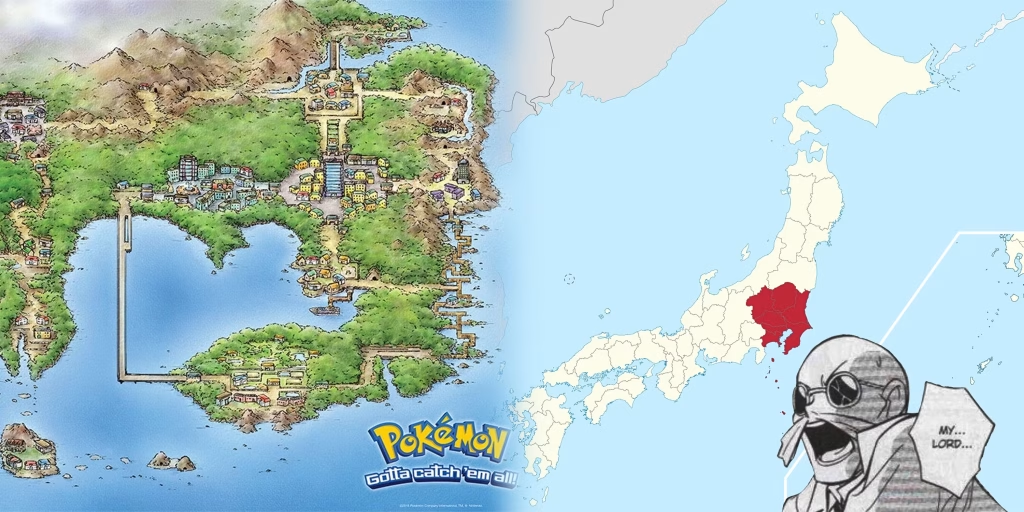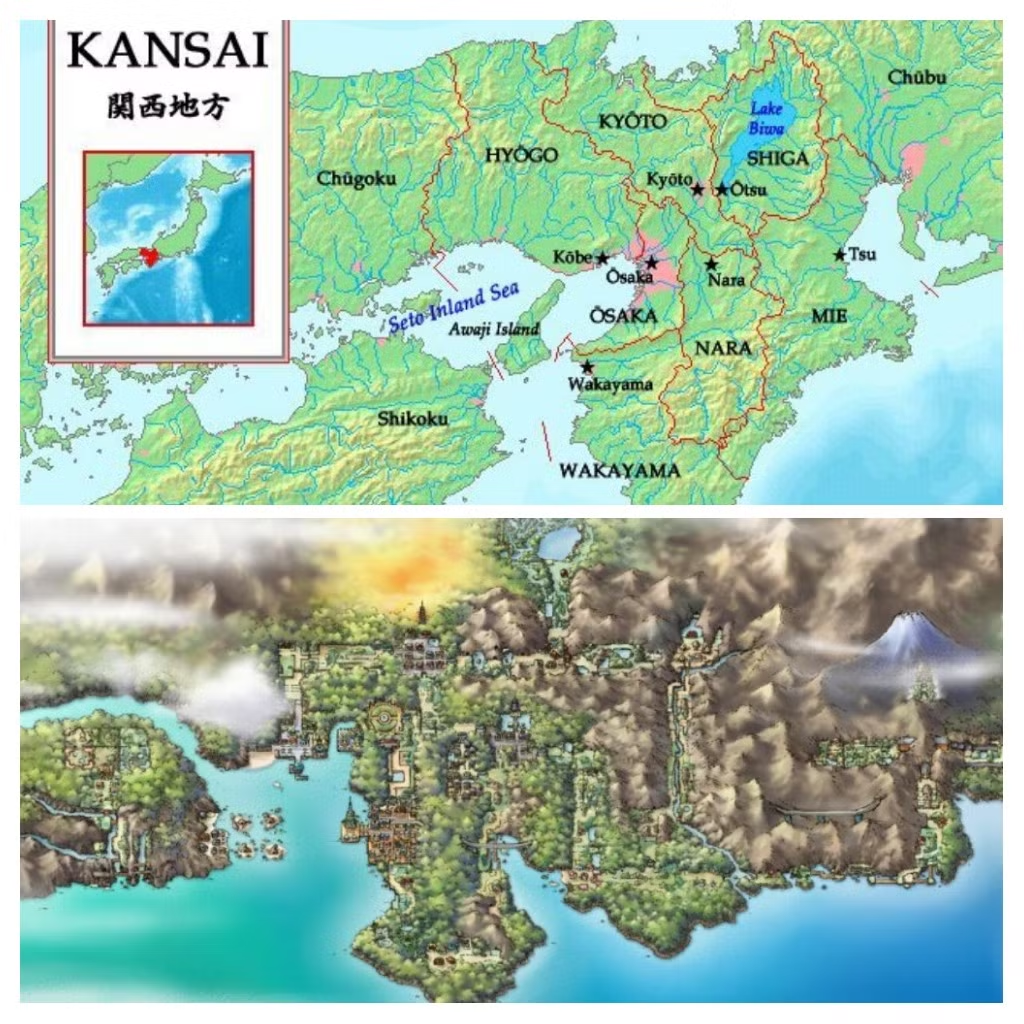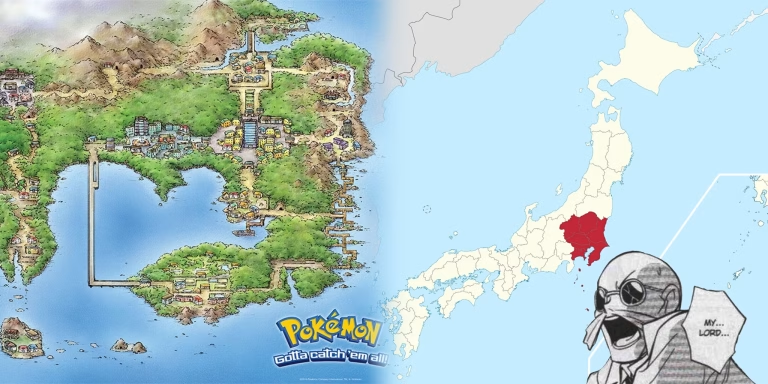Introduction
The Pokémon series has fascinated millions, and one of its most intriguing elements is how many of its regions and cities are inspired by real locations in Japan. From futuristic urban centers to tranquil countryside and sacred mountains, the Pokémon world mirrors the beauty and diversity of the Japanese archipelago. This guide reveals those real-life locations and offers fans the chance to explore them firsthand.

Chapter 1: Kanto Region – Where It All Began
The in-game Kanto region is directly inspired by Japan’s real Kanto area. It reflects urban growth, technological innovation, and sprawling cityscapes.
Pallet Town
Inspired by Machida, a suburban area of Tokyo. Serigaya Park, where Pokémon creator Satoshi Tajiri spent his childhood catching insects, mirrors the quiet and nostalgic feel of Pallet Town. A Poké Lid featuring Bulbasaur, Charmander, and Squirtle can also be found here.
Viridian City and Viridian Forest
Viridian City takes cues from Hakone and Mishima in Shizuoka Prefecture, surrounded by forests and mountains. Viridian Forest resembles the woodlands of the Okuchichibu Mountains in Saitama.
Pewter City and Mount Moon
Pewter City is inspired by Maebashi in Gunma Prefecture, known for its rocky terrain and mountains. Mount Moon is based on Mount Akagi, a volcanic mountain in the same region.
Cerulean City
Reflects Tsuchiura, near Lake Kasumigaura, Japan’s second-largest lake, aligning with Cerulean’s affinity for water.
Vermilion City
Inspired by Yokohama, Japan’s largest port city, and Yokosuka, a naval town. This also explains Lt. Surge’s “foreign” characteristics.
Lavender Town
Its mysterious aura mirrors Narita and Ushiku in Chiba Prefecture. Ushiku is home to the Ushiku Daibutsu, one of the tallest Buddha statues in the world.
Celadon City
Modeled after Shinjuku in Tokyo—famous for shopping districts, entertainment, and vibrant nightlife.
Saffron City
Inspired by central Tokyo, especially the Marunouchi business district. The Magnet Train resembles the Shinkansen bullet train.

Chapter 2: Johto Region – Tradition and History
The Johto region is based on Japan’s Kansai area, rich in culture, temples, and historical heritage.
New Bark Town
Reflects the peaceful environment of Hamamatsu, known for its open landscapes and wind farms.
Violet City
Inspired by Nara, one of Japan’s ancient capitals, home to temples and the five-story pagoda of Kōfuku-ji, similar to Sprout Tower.
Azalea Town
Mirrors Minabe, famous for apricot groves and close to the sacred Kumano Kodō pilgrimage trails through ancient forests.
Goldenrod City
Based on Osaka. The Tsūtenkaku Tower is reflected in Goldenrod’s Radio Tower, and Namba Walk in the underground Goldenrod Tunnel.
Ecruteak City
Inspired by Kyoto, with its traditional architecture, temples, and the atmosphere of places like Kinkaku-ji and the historical Sai-ji Temple.

Chapter 3: Hoenn Region – The Southern Tropics
Hoenn, from Pokémon Ruby and Sapphire, is based on Kyushu, Japan’s southern island known for volcanoes, warm climate, and lush landscapes. Its coastlines, mountains, and natural diversity perfectly match Hoenn’s tropical setting.
Chapter 4: Sinnoh Region – Snow and Serenity
Sinnoh, featured in Pokémon Diamond and Pearl, is inspired by Hokkaido, Japan’s northernmost island. Snowy mountains, hot springs, and wilderness dominate the region.
Jubilife City
Inspired by Sapporo, the largest city in Hokkaido. The Sapporo TV Tower resembles Jubilife’s central TV building.

Chapter 5: Sevii Islands – Volcanic Escape
The Sevii Islands are based on the Izu and Ogasawara island chains south of Tokyo. These areas are known for volcanic activity, secluded beaches, and natural hot springs.
One Island
Resembles Niijima and Kozushima, islands known for surfing, nature, and volcanic terrain.
Four Island
Inspired by Aogashima, a remote volcanic island with a small population living inside a double caldera.
Conclusion
The Pokémon universe pays tribute to Japan by weaving its cities, landscapes, and culture into its world-building. From Tokyo’s busy streets to Kyoto’s temple-lined paths and Hokkaido’s snow-covered peaks, these real-world inspirations make Pokémon feel grounded and magical at the same time. For fans visiting Japan, exploring these locations is like stepping directly into the world they’ve loved since childhood—so grab your Poké Balls and start your journey across real-world Kanto, Johto, and beyond.



